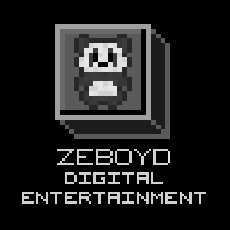While most people who attended Steam Dev Days seemed to be mostly interested in the Steam Machine initiative (which hopefully popularizes cheap premade gaming PCs), the Steam Controller (intriguing but our turn-based RPGs don’t exactly require sophisticated controllers), and the future of VR (which I admit I didn’t even bother to attend any panels on since VR doesn’t interest me and I was feeling a little ill by the end of the convention), I found the most valuable takeaway from the conference was all the great marketing advice that was given. Here are some of my notes from the panels I attended that relate to marketing.
Marketing Your Game – Despite being the only panel I attended that mentioned marketing in the title, I found this panel to be the least helpful. It’s not that the advice given was poor or inaccurate so much as it was beginner-level advice (which admittedly, a lot of indie developers still really need to hear): stuff like use conventions to playtest & network, make sure your game has a unique selling point & sounds exciting when summarized in a single sentence, don’t pick a stupid name for your game, etc. The one thing I thought was really interesting was when the developer at Positech Games said that he’s gotten by just fine with ignoring conventions and instead has spent a fair bit of money on marketing, mostly on banner ads – he mentioned $75k but I didn’t jot down which game(s) that covered – and he’s done REALLY well for himself.
Community and Communication in Games-As-Service – This panel was a gold mine of good advice. Although the panel focused on free DLC/updates (specifically on Team Fortress 2), much of the advice is just as applicable to initial game launches. I highly recommend watching the entire panel once it goes online, but in the meantime, here are some of the major points pertaining to marketing. They found that large updates worked better for marketing purposes than smaller ones. A 5 day news cycle where you introduce the update in day 1 & then go into greater details over the next 4 days works well. Ignite speculation – tease elements so that the fans can have fun guessing what you’re going to do (and in fact, their guesses may give you more ideas). Movies are great for 3rd party sites, but screenshots, art, and comics can be effective as well and are drastically cheaper. Make sure to communicate clearly your cool new features (if you have many smaller features, try combining small features into logical clusters for better communication). Narrative outside the game proper can help to engage your story-focused fans. Leaks aren’t necessarily bad and can actually help you. Finally, bad communication is worse than none.
Is Early Access Right for You – The big marketing highlight here came from the debate between panelists on whether Early Access games should cost more, less, or the same as the “final” version of the game. Pricing early access higher than the final game is good for protecting early backers (like beta backers on a kickstarter) and for keeping your initial playtester pool small as you prepare for a “true” release down the line, but if you play your cards right with a quality early access experience, a low price can be amazing marketing as early access players become fans and help spread the word.
In-Game Economies in Team Fortress 2 & DOTA 2 – This was mostly about freemium business models, but again, there was some good general marketing advice here. Treat your customers well. Avoid moves that could cause purchasing regret (someone who regrets buying your game is unlikely to buy your next one). Focus on creating persistent value for your customers. Create positive externalities – how can you make it so that if one person spends money on your game, it has the potential to improve the game for everyone? Speaking of which…
Embracing User-Generated Content – User-created mods can be a great source of marketing for your game – just look at DayZ (Arma 2 saw such a huge boost in sales from the DayZ mod that they eventually decided to hire the modder to make DayZ into a full-fledged standalone game). However, user-created content doesn’t have to be limited to just modifying the game experience directly. Screenshots, fan art, music covers, fanfiction, cosplay – these are all forms of user-generated content that can help spread the word to potential buyers. By encouraging user-generated content, you can extend your reach far beyond what your development team can accomplish by itself.
And that’s it for my Steam Dev Days 2014 experience! I hope these notes will prove helpful.


Shame to hear. Been kinda sad how few updates this site gets now. This website is the primary way I get information about you all since I don’t twitter. Also miss the art segments and occasional reviews of older games.
Honestly, we never got much response or traffic from the Kickstarter report articles we wrote so now that we’re no longer studying Kickstarter projects to prepare for our own, we’ve discontinued writing about them. However, we still link to interesting kickstarters on our twitter accounts.
Thanks for the recap. Any chance the Video Game Kickstarter report will be making a come back?